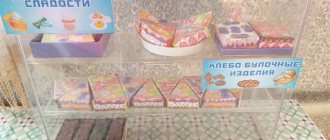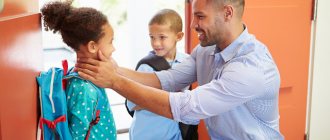Classic literature about raising children
“How to Love a Child” - Janusz Korczak
About the book: This is a real bible for parents and teachers and one of the few books about child psychology that has not lost its relevance more than 100 years since its publication. Polish teacher and doctor Janusz Korczak dedicated his life to working with orphans. Over the years of practice, he came to the conclusion that it is more important to love, respect and give a child freedom, rather than lecture and build a system of prohibitions. The scientist's observations and the literary talent of the lyricist add up to a soulful text full of invaluable experience.
What is the benefit: The book gives a charge of love for children and teaches a philosophy that supports the teacher in the most difficult professional moments. Korczak teaches to understand and accept children from infancy to the end of adolescence, without changing or making them “comfortable.” Learn to live with these “foreigners” who still don’t know the language and laws well.
“Everything, everything, everything about raising children” - Lyudmila Petranovskaya
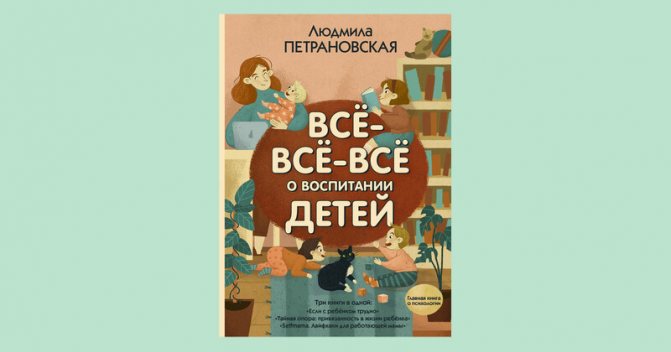
About the book: The book contains three bestsellers by psychologist Lyudmila Petranovskaya: “If it’s difficult with a child,” “Secret support” and “Selfmom: life hacks for a working mother.” Petranovskaya examines the most common problems and crises in relationships with children and gives practical advice for each case. For example, it explains why children suddenly become hysterical and how to stop it.
What is the benefit: The author tells how to help a child get out of a conflict or difficult situation, grow harmoniously and not waste time on struggle and competition. The book teaches adults to become significant in children's lives and understand what really lies behind “bad manners.” Readers will learn why modern psychologists beg not to make children obedient.
“The Big Book of Communication with a Child” - Julia Gippenreiter
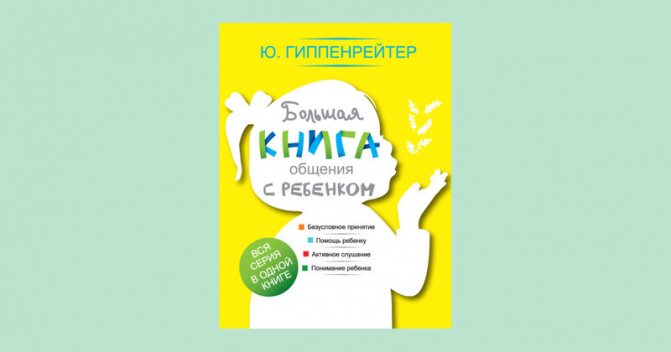
About the book: Expanded edition of Julia Gippenreiter’s bestsellers “Communicate with a child. How?”, “We continue to communicate with the child. So?" and chapters from the book “We have different characters. What should I do? Books have been republished since the 1990s, and teachers often refer to the works of the author, who is also a professor at Moscow State University and a doctor of psychological sciences. Answers to the eternal questions of several generations of parents are collected here in a collection. The book is built on the principle of small lessons.
What is the benefit: The author teaches the correct behavior with children “by contradiction”: an analysis of incorrect parenting strategies and ways to change them, ways to solve emotional difficulties and create warm, trusting relationships are provided.
How does a child's brain work?
“How to talk so children will listen, and how to listen so children will talk” - Elaine Mazlish and Adele Faber

About the book: A collection of tips on how to properly communicate with children from two psychologists and mothers of many children. Contains recommendations for building communication with children of different ages: a lot of practice, a minimum of theory.
What are the benefits: The author's methods help to conduct a dialogue with children so that they hear requests and respond to them without shouting or punishment. There are also tips on how to encourage your child to share his thoughts and feelings with adults.
"Thirty Million Words" - Dana Susskind
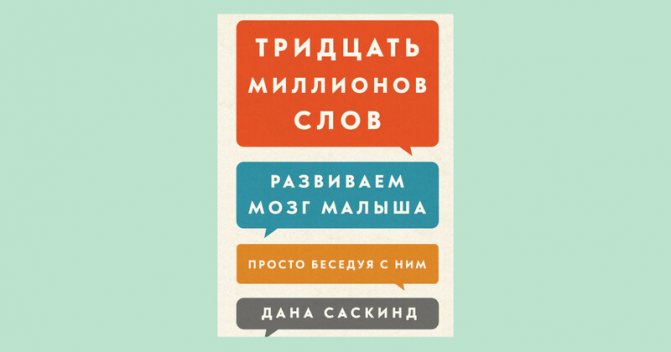
About the book: Professor, pediatric cochlear implantation surgeon from Chicago Dana Susskind talks about a study among children with congenital hearing impairments and their rehabilitation after implant installation. It turned out that children with the same initial data, who underwent surgery at the same age, recovered differently only because of the way their parents communicated with them.
What is the benefit: Data is provided on the influence of adult speech on children under four years of age, which helps to learn what words to use and how to construct sentences, why it is better to call a child a “helper” rather than asking for his help directly, and how many words per day are needed for development of the child's brain.
"The Emotional Intelligence of a Child" - John Gottman
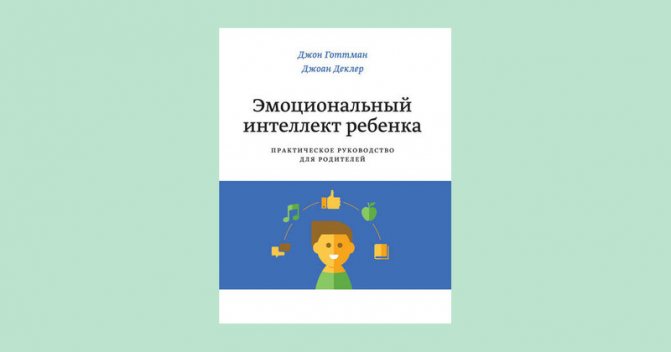
What: Family psychologist John Gottman believes that in the last couple of decades, simply loving a child and adhering to certain parenting tactics is not enough, and one of the first skills that children should be taught is the ability to recognize their own emotions.
What is the benefit: Adults who read the book will be able to explain their emotions to children and thus influence their behavior and correct it. There are recommendations for building emotional education, which is aimed at eliminating nervousness and irritability in relationships between children and adults, reducing the level of anxiety and insecurity in children.
“How to stop snapping at your children” - Carla Naumburg
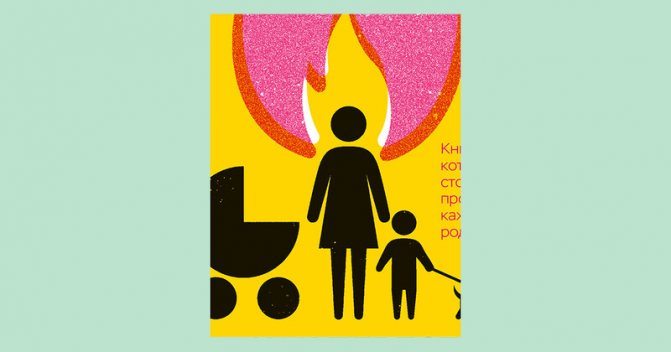
About what: The author, a sociologist and mother of two daughters, admits that she also had breakdowns and hysterics in her life. And most of the advice from the Internet was only about how to deal with these outbreaks. But jumping or screaming alone to relieve negative emotions is not the solution: sometimes being a parent 24/7 is too difficult. Carla offers her own ways of avoiding irritability and guilt in parenting.
What is the benefit: The book was written for parents, but kindergarten teachers have similar problems. How can you not break down and scream if 25 three-year-olds don’t hear the request to calm down? The author talks about what becomes the trigger for anxiety and the trigger for rage and screaming. This allows you to extinguish negative emotions in the “bud”, because the breakdown itself cannot be controlled and willpower alone will not get rid of it.
Education and training in the senior group of kindergarten. Program and methodological recommendations
Physical education
Continue to work to improve health: harden the body, improve basic movements, form correct posture in all types of activities, cultivate hygiene habits and bodily reflection (knowledge of your body, the names of its individual parts).
Develop independence and creativity of preschoolers; to cultivate beauty, expressiveness and grace of movements, a conscious attitude towards them.
Indicators of physical development of children
Physical development of boys from 5 to 6 years old
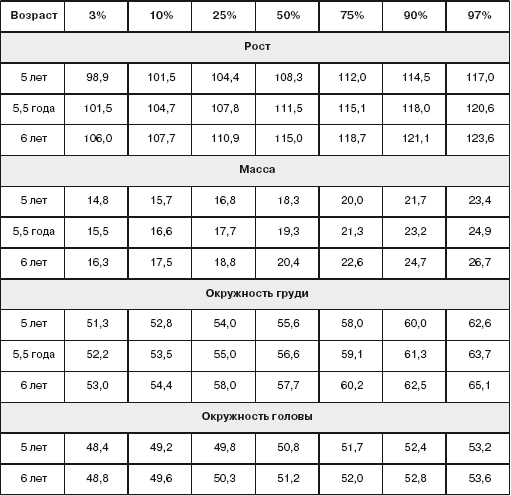
Physical development of girls from 5 to 6 years old
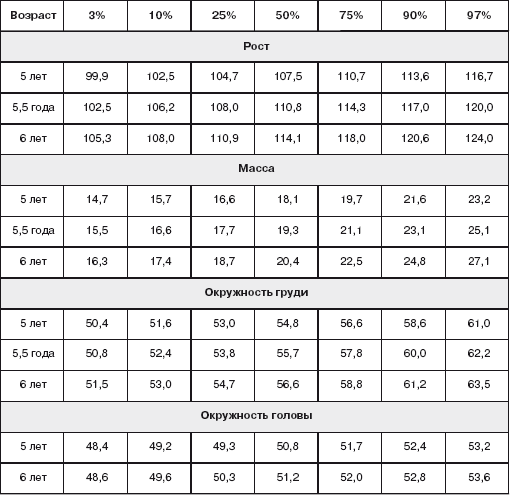
Note.
The table is printed based on the book by Samarin V.M., Vorontsov I.M. History of child development. - St. Petersburg. — 2000. — pp. 136–143.
Physical education and health work
Continue, under the guidance of medical professionals, to carry out a set of hardening procedures using natural factors (air, sun, water) in combination with various physical exercises. Do morning exercises every day for 8-10 minutes.
During activities that require high mental load, and in the intervals between classes, conduct physical education minutes lasting 1–3 minutes.
To teach children to organize outdoor sports games on their own, to perform sports exercises while walking, using the available physical education equipment: in winter, sledding, sliding along ice paths, skiing; during the warm season, ride a two-wheeled bicycle, scooter, or roller skates. If conditions exist, organize training for children in swimming and hydro aerobics.
Improve psychophysical qualities in various forms of motor activity.
Carry out physical education activities lasting 25–30 minutes once a month; twice a year physical education holidays lasting up to
1 hour.
During physical education and holidays, teach children to actively participate in group games, entertainment, and competitions.
In the process of physical education and health work, develop physical, mental, moral qualities, cultivate independence and creativity.
Physical Culture
Continue to form correct posture; the ability to consciously and creatively perform movements.
Improve children's motor skills and abilities.
Develop a culture of movement and bodily reflection.
Develop psychophysical qualities: speed, strength, endurance, flexibility.
Strengthen the ability to walk and run easily, energetically pushing off from the support. Learn to run a race, overcoming obstacles.
Learn to climb a gymnastic wall, changing the pace.
Learn to jump long and high from a running start, to run up correctly, take off and land depending on the type of jump, jump onto a soft surface through a long rope, and maintain balance when landing.
Learn to combine a swing with a throw when throwing, throw and catch the ball with one hand, hit it with your right and left hands on the spot and lead while walking.
Learn to ski with a sliding step, climb a slope, descend a mountain, ride a two-wheeled bicycle, ride a scooter, pushing off with one leg (right and left). Learn to navigate in space.
Teach elements of sports games, games with elements of competition, relay races.
To teach adults to help prepare physical education equipment for physical exercise and put it away.
To comprehensively develop the child’s personality, to form physical, mental, moral, aesthetic, spiritual qualities.
Maintain children's interest in various sports, provide them with some information about events in the sporting life of the country.
Basic movements
Walking.
Walking is normal, on toes (hands behind the head), on the heels, on the outer sides of the feet, with a high rise of the knee (hip), a roll from heel to toe, an additional step to the right and left. Walking in a column one at a time, two at a time, three at a time, along the walls of the hall with a turn, performing various tasks of the teacher.
Balance exercises.
Walking on a narrow rail of a gymnastic bench, a rope (diameter 1.5–3 cm), on an inclined board straight and sideways, on toes. Walking on a gymnastic bench, stepping over medicine balls, squatting in the middle, laying out and collecting objects, rolling a ball in front of you with both hands, sideways (side step) with a bag of sand on your head. Walking on an inclined board up and down on your toes, sideways with an extension step. Spinning in pairs, holding hands.
Run.
Running is normal, on toes, with a high rise of the knee (hip), small and wide steps, in a column, one or two at a time; snake, scattered, with obstacles. Continuous running for 1.5–2 minutes at a slow pace, running at an average pace for 80-120 m (2–3 times) alternating with walking; shuttle run 3 times 10 m each. Speed run: 20 m in approximately 5–5.5 seconds (by the end of the year 30 m in 7.5–8.5 seconds). Running up and down on an inclined board on your toes, sideways with an extension step. Spinning in pairs, holding hands.
Crawling and climbing.
Crawling on all fours like a snake between objects, alternating with walking, running, crawling over obstacles; crawling on all fours (distance 3–4 m), pushing the ball with the head; crawling on a gymnastic bench, leaning on your forearms and knees, on your stomach, pulling yourself up with your arms. Climbing over several objects in a row, climbing into a hoop in different ways, climbing a gymnastic wall (height 2.5 m) with changing tempo, climbing from one flight to another, climbing between slats.
Jumping.
Jumping on two legs in place (30-40 jumps 2-3 times) alternating with walking, in different ways (legs crossed, legs apart, one leg forward - the other back), moving forward (at a distance of 3-4 m). Jumping on one leg (right and left) in place and moving forward, in height from a place straight and sideways through 5-6 objects - alternately through each (height 15-20 cm). Jumping on a soft surface 20 cm high, jumping from a height of 30 cm to a designated place, long jump from a place (at least 80 cm), long jump from a run (about 100 cm), high jump from a run (30–40 cm). Jumping over a short rope, rotating it back and forth, over a long rope (stationary and swinging).
Throwing, catching, throwing.
Throwing the ball up onto the ground and catching it with both hands (at least 10 times in a row); one hand (right, left at least 4–6 times); throwing the ball up and catching it with clapping. Throwing the ball from one hand to another, to each other from different starting positions and formations, in various ways (from below, from behind the head, from the chest, with a bounce from the ground). Hitting the ball on the ground in place with moving forward (at a distance of 5–6 m), rolling medicine balls (weight 1 kg). Throwing objects at a distance (at least 5–9 m), at a horizontal and vertical target (the center of the target at a height of 1 m) from a distance of 3–4 m.
Drill exercises.
Form in a column one at a time, in a circle in a line; formation into a column of twos, threes; alignment to the back of the head, in a column, in a line. Opening in a column - with outstretched arms forward, in a line - with outstretched arms to the sides. Turns right, left, stepping around, jumping.
Rhythmic gymnastics.
Beautiful, graceful performance of familiar physical exercises to music. Coordination of the rhythm of movements with a piece of music.
General developmental exercises
Exercises for the hands, development and strengthening of the muscles of the shoulder girdle.
Extend your arms to the sides from the position of your hands in front of your chest; raise your arms up and spread them to the sides with your palms up from the position of your hands behind your head. Raise your hands with your fingers clasped (the hands are turned with the backs inward) forward - up; raise your arms up and back alternately, at the same time. Raise and lower brushes; clench and unclench your fingers.
Exercises to develop and strengthen back muscles and spinal flexibility.
Raise your arms up and down, standing against the wall, touching it with the back of your head, shoulders, back, buttocks and heels. Alternately raise your bent straight legs, pressing against the gymnastics wall and holding the bar at waist level with your hands. Lean forward, facing the gymnastic wall and grasping the bar at waist level; lean forward, trying to touch the floor with your palms; bend over, raising your clasped hands behind your back. Turn around, spreading your arms to the sides, from the positions of your arms in front of your chest, with your hands behind your head. Alternately move your legs to the sides from a crouching position; move your legs, crossing them from the starting position lying on your back. Pull your head and leg to your chest (group); doing pull-ups on a gymnastics bench.
Exercises to develop and strengthen the abdominal and leg muscles.
Walk in place without lifting your toes off the floor. Squat down (every time lower), raising your arms forward, up, behind your back. Raise straight legs forward (swing); perform a lunge forward, to the side (holding your hands on your belt, moving your hands forward, to the side, up).
Grab objects with your toes, lift and lower them; shift, move them from place to place. Step sideways on your heels, resting your toes on the stick (rope).
Static exercises.
Maintain balance while standing on a gymnastic bench on your toes, squatting on your toes; maintain balance after running and jumping (squatting on your toes, arms to the sides), standing on one leg, hands on your belt.
Sport exercises
Sledging.
Take each other for rides, go down the hill in twos. Make turns when descending.
Slip.
Slide along icy paths with a running start, crouching and standing up while sliding.
Skiing.
Skiing with a sliding step. Perform turns on the spot and while moving. Climb the hill using a ladder and descend it in a low stance. Ski at a slow pace for a distance of 1–2 km. Skiing games: “Who will turn first?”, “Slalom”, “Lift up”, “Catch up”.
Bicycle and scooter riding.
Ride a two-wheeled bicycle independently in a straight line, make left and right turns. Ride a scooter, pushing off with your right and left foot.
Swimming.
Move your legs up and down, sitting in the water in a shallow place and lying down, supporting yourself with your hands. Perform various movements with your hands in the water. Slide on your chest and back, exhale into the water. Swim freely. Games on the water: “Fountain”, “Box”, “The Sea is Worried”, “Swing”, “Train in the Tunnel”, “Catch the Water”, “Waves on the Sea”.
Hydroaerobics.
Move in the water, performing turns, jumps and other general development exercises, standing at the side.
Sport games
Towns.
Throw bats from the side, taking the correct starting position. Know 3-4 figures. Knock out towns from the half-cone (2–3 m) and the cone (5–6 m).
Basketball elements.
Throw the ball to each other with both hands from the chest, dribble the ball with your right or left hand. Throw the ball into the basket with both hands from the chest.
Badminton.
Hit the shuttlecock with a racket, pointing it in a certain direction. Play together with a teacher.
Elements of football.
Roll the ball with your right and left foot in a given direction. Dribble the ball around objects; roll into holes, gates. Pass the ball with your feet to each other in pairs, hit it against the wall several times in a row.
Hockey elements.
Roll the puck with your stick in a given direction and roll it into the goal. Roll the puck to each other in pairs.
Outdoor games
Continue to teach children to independently organize familiar outdoor games, bring them to completion, showing initiative and creativity.
To instill in children a desire to participate in games with elements of competition and relay races. Teach sports games and exercises.
Examples of games
Let's run away.
“Traps”, “Corners”, “Pair running”, “Mousetrap”, “We are funny guys”, “Geese-swans”, “Make a figure”, “Crucian carp and pike”, “Dashes”, “Sly fox”, “ Counter dashes", "Empty place", "Entertainers", "Homeless hare".
With jumping.
“Don’t stay on the floor”, “Who will jump better?”, “Fishing rod”, “From bump to bump”, “Who will make fewer jumps?”, “Classes”.
With climbing and crawling.
“Who will get to the flag faster?”, “The Bear and the Bees”, “Firemen in training”.
With throwing.
“Hunters and Hares”, “Throw the Flag”, “Hit the Hoop”, “Knock the Ball”, “Knock the Pin”, “Ball Driver”, “Ball School”, “Serso”.
Relay races.
“Relay in pairs”, “Carry the ball without hitting the pin”, “Throw the ball into the hoop”, “Obstacle course”.
With elements of competition.
“Who will get through the hoop to the flag faster?”, “Who is faster?”, “Who is taller?”.
Folk games.
“Burn, burn clearly!” and etc.
Education of cultural and hygienic skills
Cultivate the habit of keeping your body clean, your clothes and hair tidy; Brush your teeth yourself, keep your nails clean; When coughing and sneezing, cover your mouth and nose with a tissue and turn to the side.
Teach how to quickly and neatly dress and undress, maintain order in your closet (put clothes in certain places), and make your bed neatly.
Continue to improve your eating skills: use cutlery (fork, knife) correctly; eat carefully, silently, maintaining correct posture at the table.
By the end of the year, children can
• Walk and run easily, rhythmically, maintaining correct posture, direction and pace.
• Climb the gymnastic wall (height 2.5 m) with changing tempo.
• Jump onto a soft surface (height 20 cm), jump
to the designated place from a height of 30 cm, long jump from a standing position (at least 80 cm), from a running start (at least 100 cm); in height from the run (at least 40 cm); jump over a short and long rope.
• Throw objects with the right and left hand at a distance of 5–9 m,
at a vertical and horizontal target from a distance of 3–4 m, combine a swing with a throw, throw the ball up onto the ground and catch it with one hand, hit the ball on the spot at least 10 times, while walking (distance 6 m), control the ball.
• Perform static and dynamic balance exercises.
• Form a column of three or four; align, open in a column, line; make turns right, left, around.
• Know the starting points, the sequence of performing general developmental exercises, and understand their health-improving significance.
• Slide along the icy paths while completing the task.
• Skiing at a sliding pace for a distance of about 2 km; take care of your skis.
• Ride a scooter.
• Participate in exercises with elements of sports games: gorodki, badminton, football, hockey.
• Swim freely.
• Perform elements of hydroaerobics; independently organize familiar outdoor games, come up with games based on given plots with the help of the teacher.
• Continue to develop creativity in motor activity, develop the ability to vary exercises and games, invent and perform imitation and non-imitation exercises, demonstrating beauty, grace, expressiveness, and plasticity of movements.
![Literacy lesson in the preparatory group “Sounds [K[-[K'] and the letter K”](https://properbooks.ru/wp-content/uploads/zanyatie-po-obuchenii-gramote-v-podgotovitelnoj-gruppe-zvuki-k-k-330x140.jpg)

